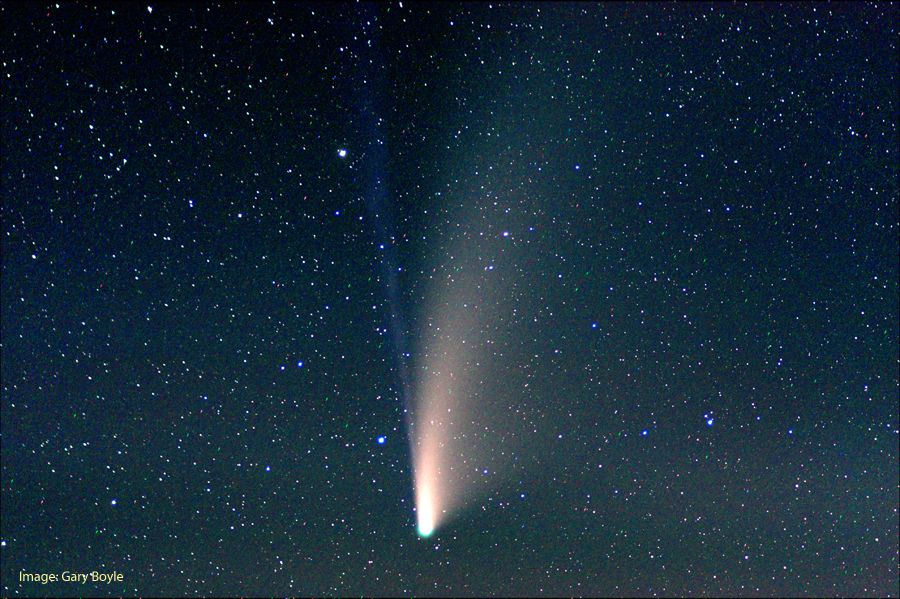NEOWISE – The Little Comet That Did
Not since the memorable appearances of Comets Hyakutake in 1996 and Hale-Bopp in 1997 has the world had the opportunity to see and photograph a fantastic naked-eye comet. Discovered on March 27, 2020, Comet C/2020 F3 NEOWISE rounded the sun on July 3 at a close approach of 43 million kilometres and survived. Two other comets namely Atlas and Swan fizzled out a few months prior and so did our opportunity to see these celestial visitors.
NEOWISE has treated us to a “once in a decade” event as it was reported by news sources around the world and help draw people outdoors to see it, allowing them to become one with nature. I started imaging the comet on the morning of July 5, the day after the extremely faint penumbral lunar eclipse. As the month went on, the comet kept moving higher in the north sky and became circumpolar thus never setting from our location.

With the backdrop of the familiar Big Dipper, photographers had perfect sky conditions as the moon did not start interfering until July 24. With advancements in technology, today’s DSLR cameras along with better processing software have resulted in high-quality images. The comet was closest to earth on July 23 at a distance of 103 million kilometres and will not be returning for another 6,800 years. The comet will continue to dim in August and hopefully, this will not be the last grand naked-eye comet to be seen in our lifetime.
August is known for one of the top meteor showers of the year, the Perseids. The best night to view this annual shower is on August 12 into the morning of the 13. You will see close to 100 meteors per hour striking the earth’s atmosphere at 72 km/sec. The 34% lit moon will rise before 1 a.m. and will be a bit of a factor when seeing the fainter meteors.

As you count meteor all night long Jupiter and Saturn are visible in the southern sky as the sun sets. Mars rises around 10:30 p.m. and is steadily getting brighter. Over the next few weeks and will the same brightness as Jupiter around September 25 at magnitude -2.39.
The brightest planet of the solar system, Venus will be rising at 2:30 local time and will be at its great western elongation on the 13th when it is 46 degrees from the sun. It will appear 50% lit in the eyepiece of a telescope. Two mornings later, the 15% lit moon will appear above Venus and pose for a great digital moment.
The Full Sturgeon Moon occurs on August 3 with New Moon on August 18.
Until next month, clear skies everyone.
